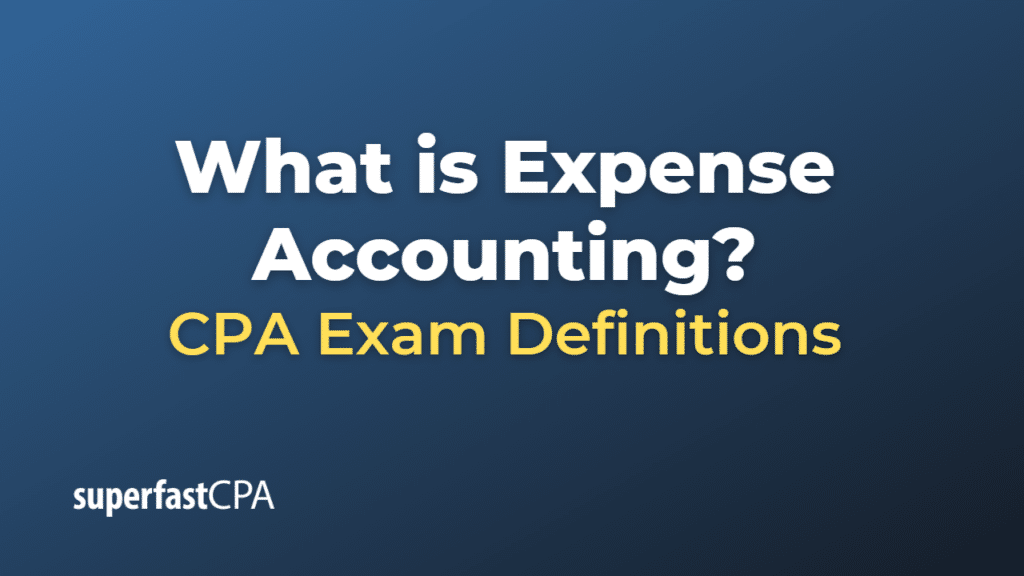Expense Accounting
Expense accounting, also known as cost accounting, is a method of accounting that involves recording, classifying, analyzing, and allocating costs associated with business operations. It’s a vital part of accounting that helps businesses track and manage their expenses, thereby contributing to strategic financial planning and decision-making.
Key components and concepts of expense accounting include:
- Expense Recognition: This principle dictates that expenses should be recognized in the same accounting period as the revenues they helped to generate. This is often referred to as the “matching principle” in accounting.
- Expense Classification: Expenses are categorized based on their nature or function. For instance, expenses might be classified as operating expenses, non-operating expenses, or capital expenditures.
- Expense Allocation: Some expenses are directly linked to specific products, services, or departments, while others need to be allocated. For instance, the cost of raw materials can be directly linked to the product, while overhead expenses like utilities or rent need to be allocated among different products, services, or departments based on an appropriate allocation base.
- Depreciation and Amortization: These are methods used to spread the cost of long-term assets over their useful life, thereby matching the expense of the asset to the revenue it generates over time.
- Expense Reporting: Expenses are reported on the company’s income statement, which shows revenues, expenses, and net income for a specific period.
Expense accounting is crucial for understanding the cost structure of a company, managing budgets, setting prices, improving efficiencies, and enhancing profitability. Through expense accounting, a company can identify areas where costs can be reduced or controlled, thereby improving the overall financial health of the organization.
Example of Expense Accounting
Let’s consider a fictional manufacturing company, “TechWidget Co.” which produces and sells tech widgets.
Here’s how expense accounting might work for them:
- Expense Recognition: TechWidget Co. purchases raw materials in January for $50,000 to produce widgets that will be sold in February. Following the matching principle, TechWidget Co. recognizes this $50,000 expense in February, when the revenue from the widget sales will be recognized.
- Expense Classification: TechWidget Co. categorizes their expenses as follows:
- Direct Material Costs (e.g., silicon, plastic): $50,000
- Direct Labor Costs (wages for assembly line workers): $30,000
- Manufacturing Overhead Costs (utilities, factory rent, depreciation on machinery): $20,000
- Selling, General and Administrative Expenses (marketing, office salaries, office rent): $10,000
- Expense Allocation: TechWidget Co. produces two types of widgets, Widget A and Widget B. It allocates the Manufacturing Overhead Costs between Widget A and Widget B based on the number of labor hours used to produce each type. If Widget A takes 70% of the labor hours and Widget B takes 30%, then $14,000 of the overhead costs would be allocated to Widget A and $6,000 to Widget B.
- Depreciation: TechWidget Co. purchased machinery for $100,000 that has a useful life of 10 years. Using the straight-line method of depreciation, the company would depreciate this cost over the next 10 years, recognizing an annual depreciation expense of $10,000 ($100,000 / 10 years).
- Expense Reporting: All of these expenses will be reported on TechWidget Co.’s income statement. This reporting allows the company to track its profitability and understand the cost structure of producing and selling its widgets.
Through this expense accounting process, TechWidget Co. can manage its costs, price its widgets appropriately, and make strategic decisions about its operations.












